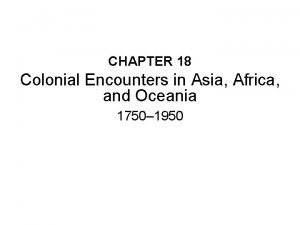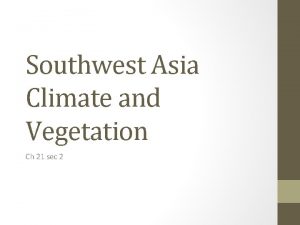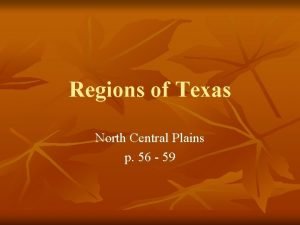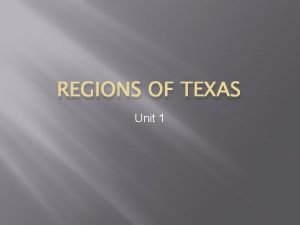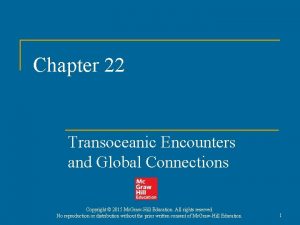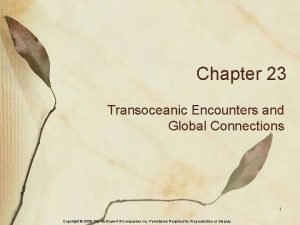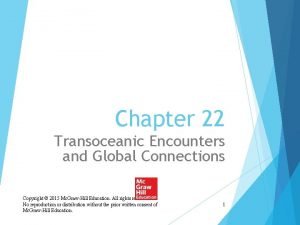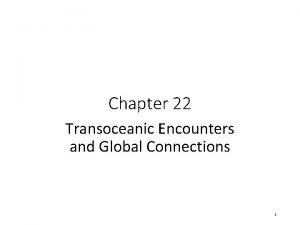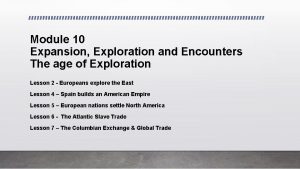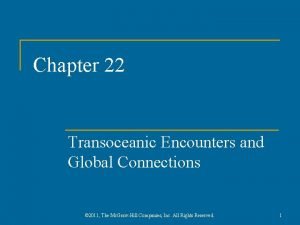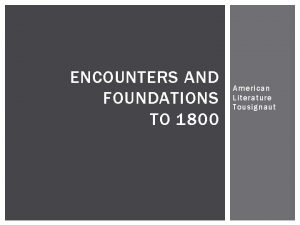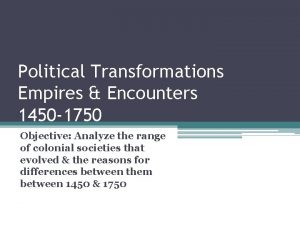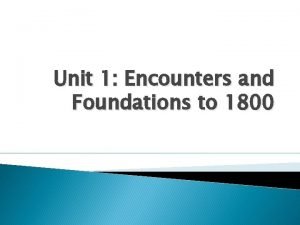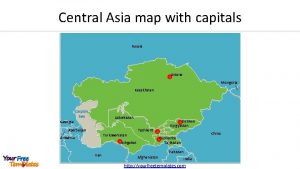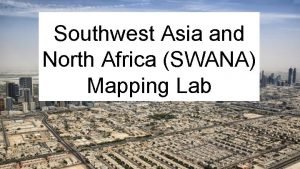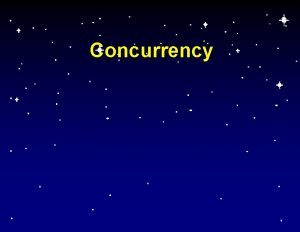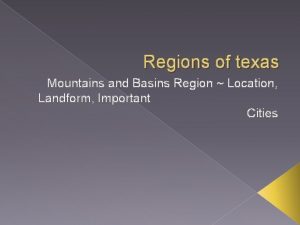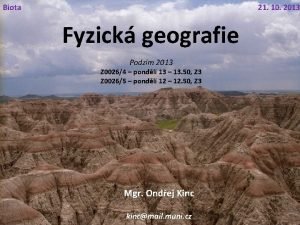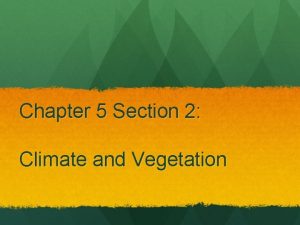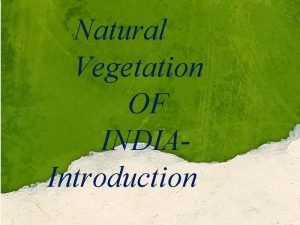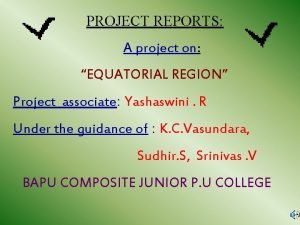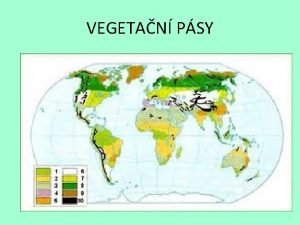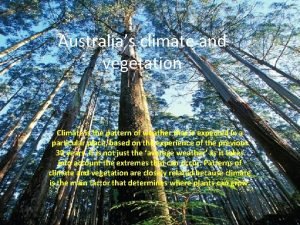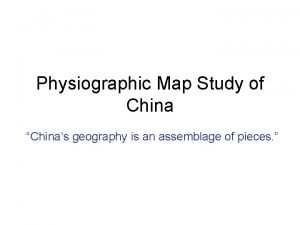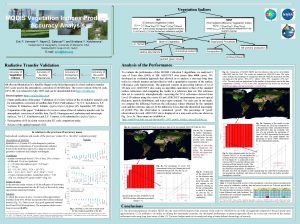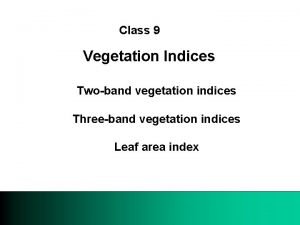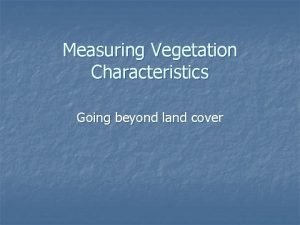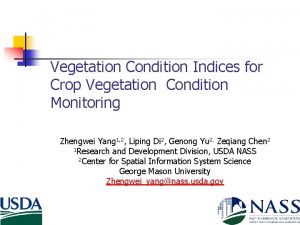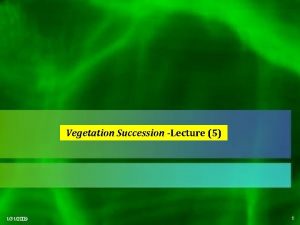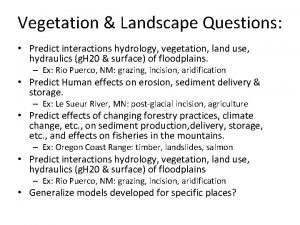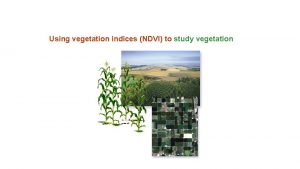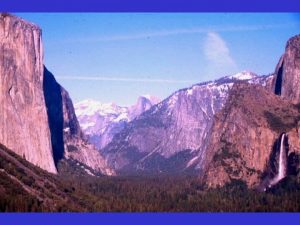ENCOUNTERS IN CENTRAL ASIA MODERN CENTRAL ASIA VEGETATION






































- Slides: 38

ENCOUNTERS IN CENTRAL ASIA

MODERN CENTRAL ASIA

VEGETATION ZONES

TOPOGRAPHY

THE STEPPE

THE STEPPE AND HUT

THE DESERTS

THE MOUNTAINS

THE OASIS

TIMELINE § § § TO 1500 BCE: RISE OF PASTORAL NOMADS 1500 BCE-200 BCE: INDO-EUROPEAN AGE 200 BCE-1380 CE: SILK ROAD EXCHANGES 200 BCE-1250 CE: XIONG-NU TO TURKS 1250 CE-1470 CE: THE MONGOL AGE 1470 CE-1640 CE: THE LAST NOMADS

NOMADIC ANIMALS

NOMADIC WARRIOR

INDO-EUROPEANS

CHARIOT PEOPLES INDO-EUROPEANS INDO-IRANIANS INDO-ARYANS THE SHANG ?

CYCLE OF CIVILIZATION 1. Nomads invade, conquer sedentary civilization 4. Nomadic culture weakens, loses all elements of old culture, falls to new nomadic threat. 2. Nomads settled down, adopt many aspects of conquered civilization. 3. New syncretic culture thrives, reaches heights.

1000 - 200 B. C. E. Later Indo-Europeans especially the Sakas, Kushans, Bactrians, Parthians & Sassanids migrated into South and Southwest Asian; their movements blended Hellenistic, Persian, and Buddhist elements in a unique culture. Persians became very active in Central Asian settlement and trade

PARTHIANS, KUSHANS

SASSANIDS

HAN DYNASTY

THE HAN, ZHANG QIAN’S EMBASSIES, HORSES & SILK

THE SILK ROAD There were many Silk Roads across Central Asia beginning in China and ending on the shores of the Eastern Mediterranean.

THE SILK ROAD Han China and the Xiong-Nu battled for control of the Eastern Steppe. In the process, China sought allies & Central Asian horses, which they exchanged for silk. The nomadic peoples exchanged the silk with civilizations in Southwest Asia and the Silk Road was born.

RELIGIOUS EXCHANGES SYNCRETISM

INTERCULTURAL EXCHANGES Trade and/or Tribute?

INTERCULTURAL EXCHANGES Art and Architecture

THE XIONG-NU

XIONG-NU, HUNS, BLACK & WHITE HUNS Tribute Empire Confederacy Hostages Political Marriages Allies, Mercenaries Destroyed Rome, India Invaded Sassanid Persia Threatened China, Germans

UIGHURS (TURKS) The branches ruled in Mongolia, Inner Mongolia, Sinkiang; parts migrated into Kazakh steppes & river valleys called Sogdiana • Manichaen and Buddhist • Supported merchants • Developed art, literature • Allies, Enemies, Saviors of Tang

TURKS IN CENTRAL ASIA

ISLAM IN CENTRAL ASIA Arab Nomads Muhammad Sasanids Overrun: Umayyads: Abbassids: Battle of Talas: Religion & Technology Paper Products! 600 CE 622 CE 637 CE 7 th c. 8 th c. 751 CE

TURKS IN SOUTH AND SOUTHWEST ASIA § Seljuk Turks: l l 9 th c. Seljuk Turks invade Southwest Asia and defeat both the Abbassids and Byzantines. Create sultanates and military states; rule as mercenaries throughout region. § Khwarazm Empire: 12 th c.

THE MONGOLS Chinggis Khan Yuan Dynasty (China, Mongolia) Golden Horde (Russia, Ukraine) Ilkhanids (Persia, Iraq) Chagatayids (Central Asia) Pax Mongolica

EXTENT OF MONGOL EMPIRE

EXCHANGES UNDER THE MONGOLS Technology, Diseases, Peoples, Tribute

TAMERLANE Central Asia and Afghanistan devastating raids into India, Persia, Iraq, Caucasus Mts. and Turkey. Built mounds of skulls following conquests and sieges.

RELATED TOPICS • The Pandemic called the Black Death • Travels of Polo, Ibn Battuta, Bar Sauma • Exchanges of Technologies • The Rise, Decline, Fall of Ming (China) • The Mughal Dynasty (India) • The Safavid and Qajar Dynasties (Persia) • The Ottoman Empire • The Rise of Moscovy (Russian Empire)

WHAT ENDED THE AGE OF NOMADS? Firearms Standing Armies High-yield agriculture Strong, centralized bureaucracies Pandemics devastated nomads Acculturation Established religions Sea-borne trade

INTERNET LINKS THE ART OF THE SILK ROAD depts. washington. edu/uwch/silkroad/ exhibit/index. shtml SILK ROAD ENCOUNTERS www. askasia. org/teachers/Instructional_ Resources/FEATURES/Silk. Road/ Intro. htm
 Colonial encounters in asia africa and oceania
Colonial encounters in asia africa and oceania Chapter 18 colonial encounters in asia and africa
Chapter 18 colonial encounters in asia and africa Southwest asia vegetation
Southwest asia vegetation North central plains texas
North central plains texas North central plains vegetation
North central plains vegetation Three worlds meet quizlet
Three worlds meet quizlet Traditions and encounters chapter 22
Traditions and encounters chapter 22 Chapter 23 transoceanic encounters and global connections
Chapter 23 transoceanic encounters and global connections Pencounters
Pencounters Chapter 22 transoceanic encounters and global connections
Chapter 22 transoceanic encounters and global connections Chapter 22 traditions and encounters
Chapter 22 traditions and encounters Module 10 expansion exploration and encounters
Module 10 expansion exploration and encounters Chapter 22 transoceanic encounters and global connections
Chapter 22 transoceanic encounters and global connections Encounters and foundations to 1800
Encounters and foundations to 1800 Transatlantic encounters in history of education download
Transatlantic encounters in history of education download Close encounters challenges
Close encounters challenges Christ encounters
Christ encounters Bentley and ziegler
Bentley and ziegler Different critical lenses
Different critical lenses Chapter 5 political transformations empires and encounters
Chapter 5 political transformations empires and encounters Political transformations empires and encounters
Political transformations empires and encounters Encounters and foundations to 1800
Encounters and foundations to 1800 Astana russia map
Astana russia map Conqueror of central asia
Conqueror of central asia Swana map
Swana map Two central themes of modern operating system are
Two central themes of modern operating system are What are the landforms in the mountains and basins region
What are the landforms in the mountains and basins region Vegetation cover ng silangang asya
Vegetation cover ng silangang asya What is natural vegetation
What is natural vegetation Chapter 21 section 2 climate and vegetation
Chapter 21 section 2 climate and vegetation Introduction of natural vegetation
Introduction of natural vegetation What is natural vegetation
What is natural vegetation Vegetation cover ng silangang asya
Vegetation cover ng silangang asya Australia climate and vegetation
Australia climate and vegetation Vegetation zones in africa
Vegetation zones in africa Arid region with sparse to almost noneexistent vegetation
Arid region with sparse to almost noneexistent vegetation What is canada's vegetation
What is canada's vegetation North china plain map
North china plain map Natural vegetation
Natural vegetation

